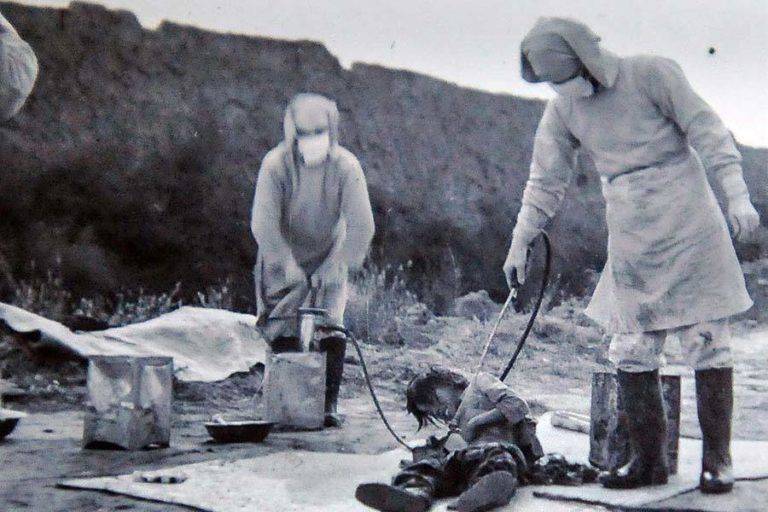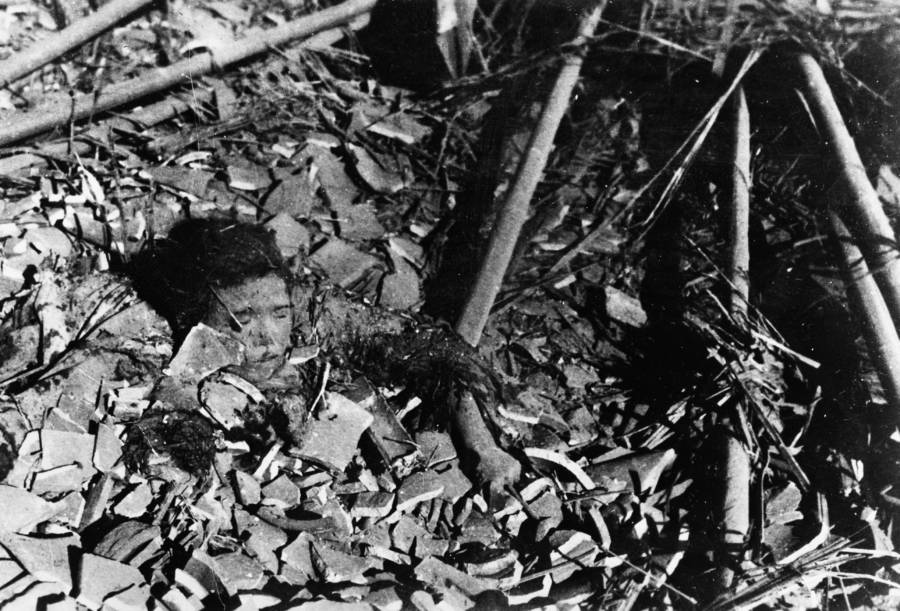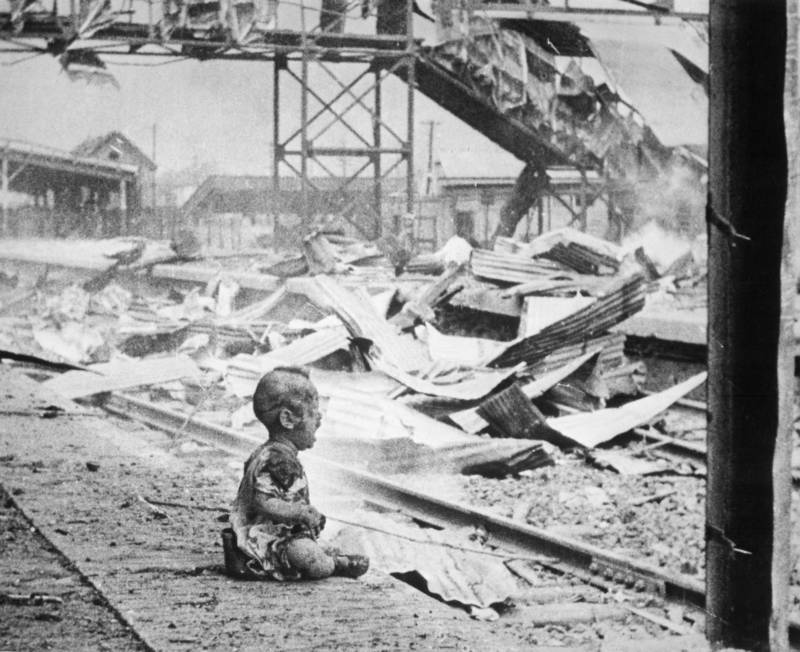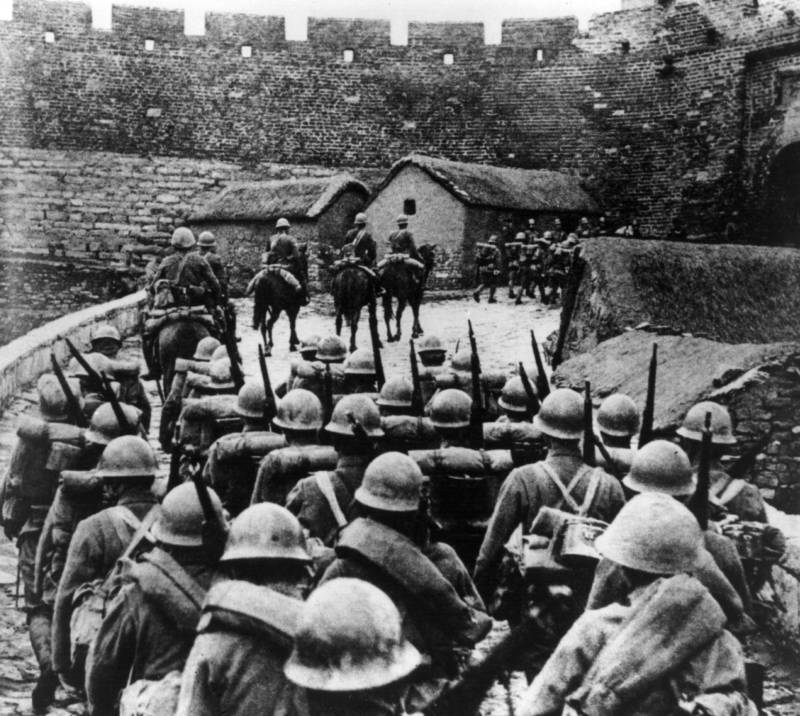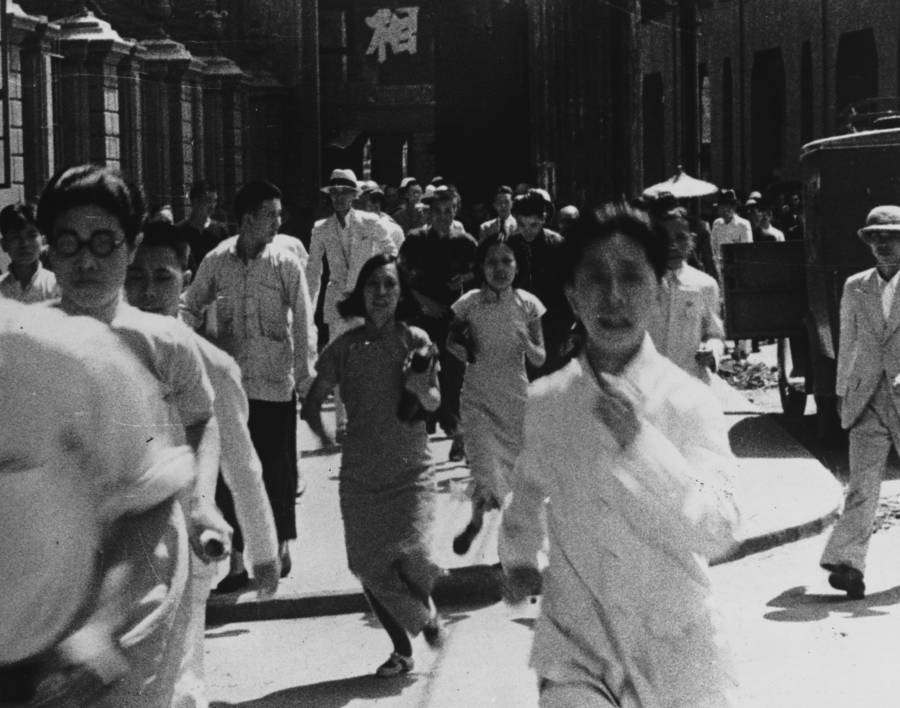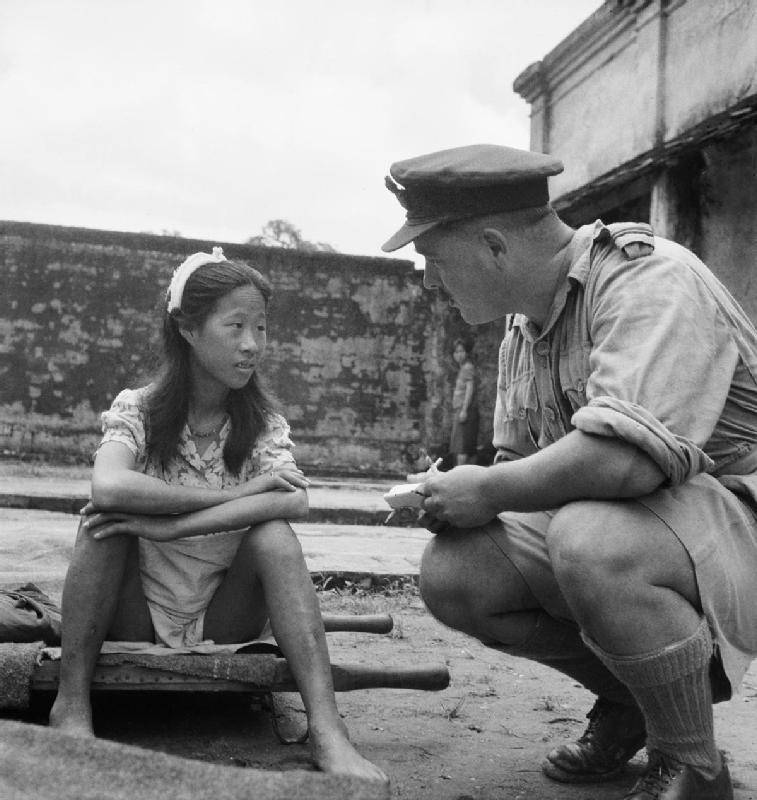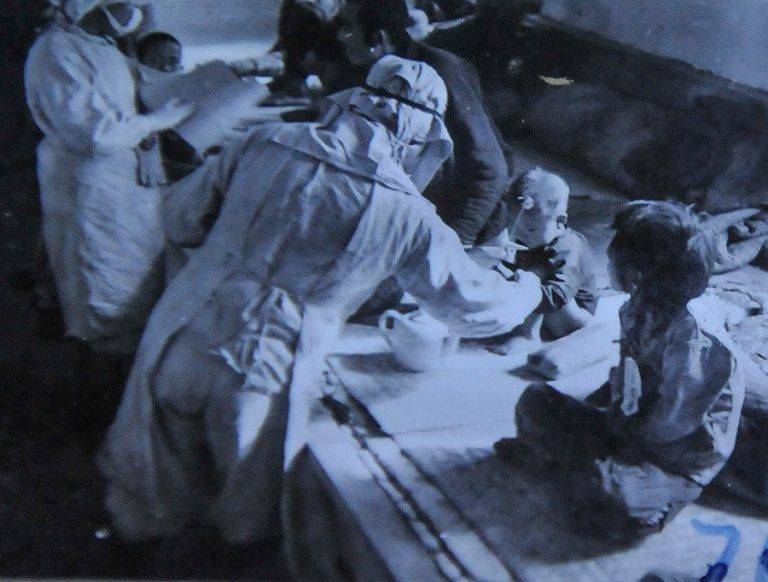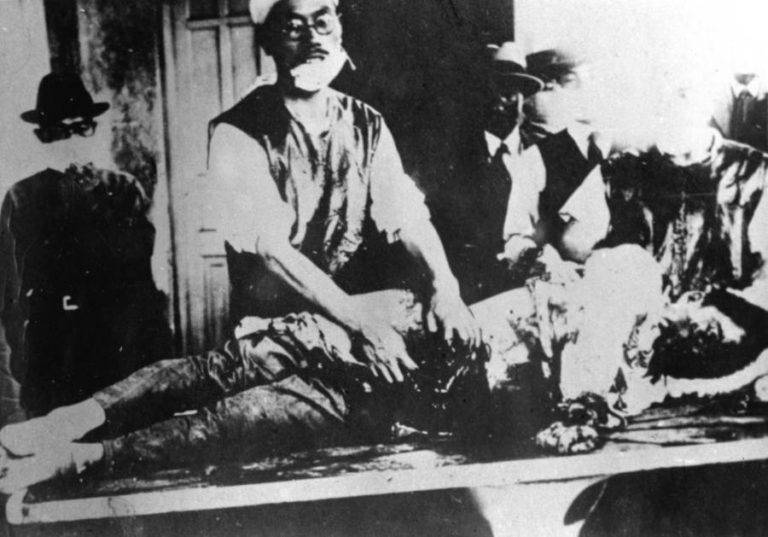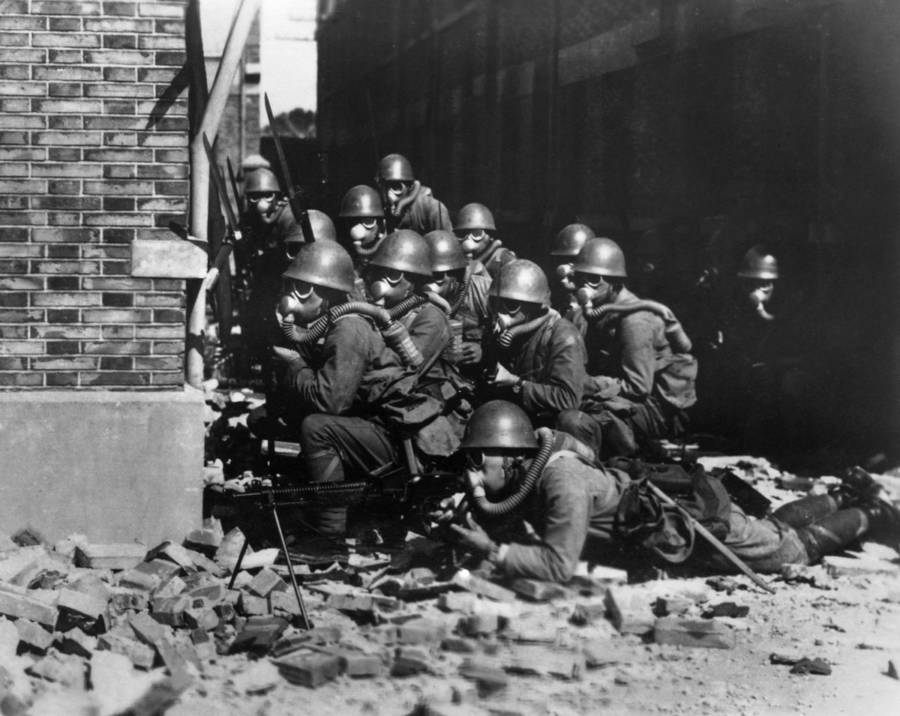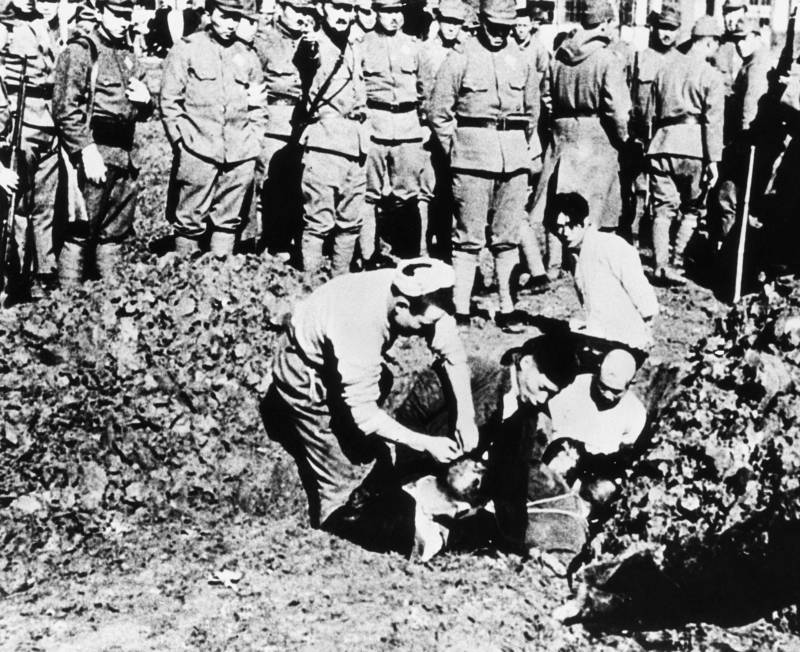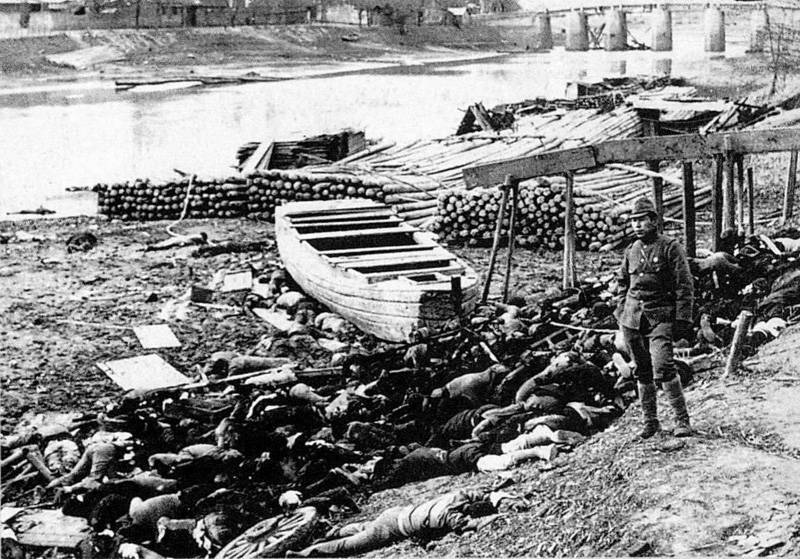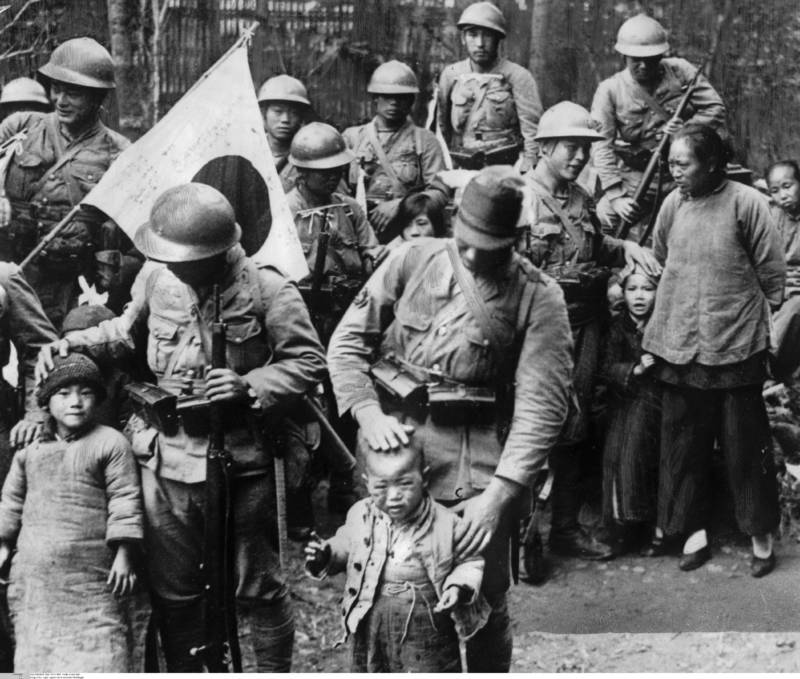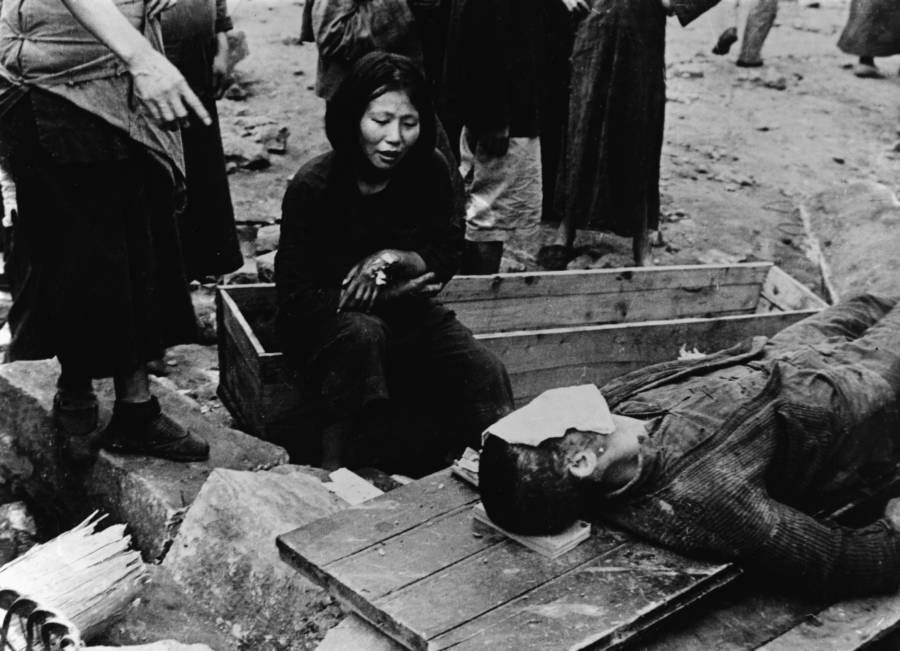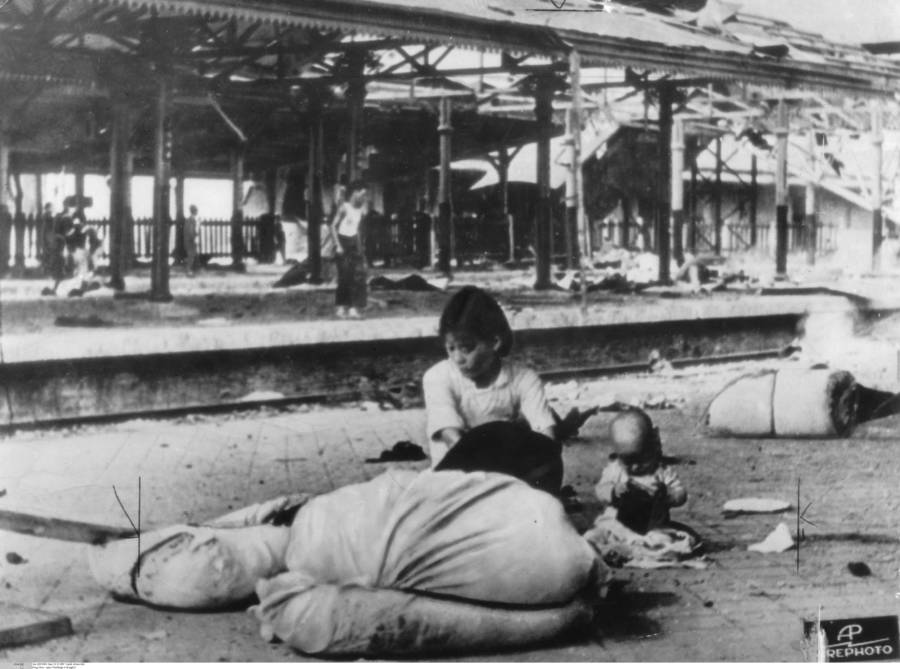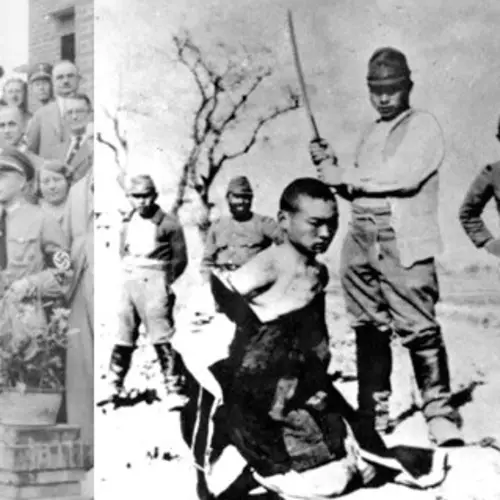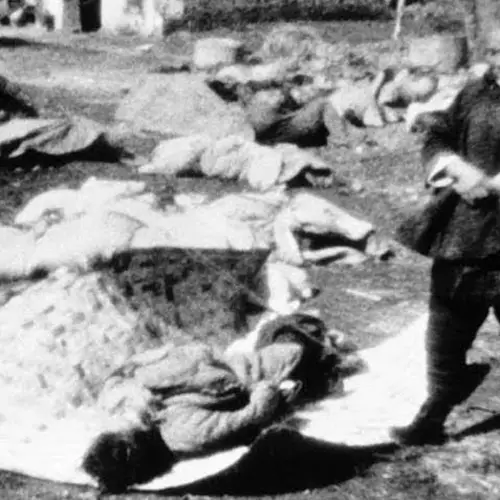With as many as 20 million dead, China suffered more casualties during World War II than any other country except the Soviet Union.
The Start Of The Second Sino-Japanese War
The first shots of the Second Sino-Japanese War were fired on Sept. 18, 1931. Eight years before Germany would invade Poland and instigate World War II in Europe, three Japanese officers, looking for any excuse to invade China, planted a bomb near their railway tracks in Manchuria. They planned to blame the explosion on the Chinese and use the attack as justification for invading the country.
The bomb didn't cause any immediate harm. It was deliberately far enough from the tracks that it barely even scratched the railway. In fact, ten minutes after the bomb went off, a train went across the damaged tracks without the slightest problem.
In those days, Japan had an unequivocal policy of militant imperialism. They were willing to do anything to extend their influence and capture the territory around them.
Manchuria, with its abundant resources and strategic location in between Japan and the Soviet Union, was the perfect place to start an Imperialist campaign. And so, with no other excuse than a harmless bomb planted by one of their own men, Japan attacked.
The invasion began in Mukden on the morning of Sept. 19, 1931, and, before nightfall, the city was captured. The Chinese were caught completely off-guard by the invasion and five hundred men were killed.
It only took five months for the Japanese armies to sweep through Manchuria. China, at the time, was locked in a turbulent internal conflict, and there was little they could do to rally against the more powerful Japanese invaders.
It would be another eight years until the rest of the world went into war. Until then, the Chinese would be all but on their own during the Second Sino-Japanese war.
Unit 731
Nearly as soon as Manchuria was under their control, the Japanese began to perform human experiments on their Chinese victims.
Japanese Surgeon General Shirō Ishii was fascinated by the use of chemical warfare in World War I, and he was determined to make chemical weapons the key to Japanese victory in the Second Sino-Japanese War.
By 1932, he'd already set up a precursor to what would later be known at Unit 731. He established a lab for human experimentation just outside of Harbin, a place where – in his own words – unsuspecting Chinese test subjects "could be plucked from the streets like rats."
Some had every drop of blood drained out of their bodies while Japanese doctors watched, taking careful notes about how their bodies deteriorated. Others were injected with plagues to observe how they died or vivisected so that the scientists could examine their internal organs while they were still alive.
Nobody shut Ishii down. Instead, his project was expanded into Unit 731 by August 1940. Human test subjects were injected with cholera, typhoid, and the bubonic plague, while others were left out in the cold so that they could watch how the frostbite killed them.

Others were just abused. Members of Unit 731 have recounted violent rapes of the women kept there, as some of the women were deliberately raped to impregnate them or infect them with venereal diseases so that the scientists could experiment on them.
Any children born in Unit 731 were subjected to horrifying experiments. Not a single one survived.
The Beginning of the Second Sino-Japanese War
By some counts, the Second Sino-Japanese War began with the invasion of Manchuria. Others, though, put the beginning at July 7, 1937, when the fighting hit full swing.
The instigator into full-out war has been hailed the Marco Polo Bridge Incident, when a Japanese soldier, Private Shimura Kikujiro, disappeared from his post there. The Japanese demanded permission to march their troops into the Chinese town on Wanping, and when they refused, the put the town under siege.
By the next day, the Japanese troops had amassed a full-on battle. By the end of the month, they'd captured Beijing and Tianjin, and from there they set their sights on Shanghai.
Soldiers weren't the only victims of the Japanese raids. Shanghai and Chongqing were racked with bombings; in one single attack on Aug. 14, 1937, more than 3,000 innocent civilians died under a hail of bombs.
The Japanese army then plowed on to Nanking and outnumbered and overpowered the Chinese with every step on the way.
After the Fall of Nanking, the Second Sino-Japanese War became more than a war. It became a massacre.
The Rape Of Nanking
Between Dec. 13, 1937, and Jan. 30, 1938, Japanese forces rounded up, tortured, and murdered up to 300,000 Chinese civilians and surrendered soldiers.
The massacre, which came to be known as the Rape of Nanking, was horrifying. People were mutilated, beaten, or slaughtered wherever they were found.
Two Japanese soldiers, Toshiaki Mukai, and Tsuyoshi Noda, even held a contest to see who could murder the most people with a sword. In a short time, they had each murdered a hundred men. Noda himself would later admit that almost every person they'd killed was unarmed and surrendering:
"We'd face an enemy trench that we'd captured ... Then we'd line them up and cut them down, from one end of the line to the other. I was praised for having killed a hundred people, but actually, almost all of them were killed in this way."
Rape was just as widespread. Japanese soldiers would go door-to-door, dragging women out of their homes to violently gang-rape them and murder anyone who intervened. Often, the women they abused were left dead.
An American witness, Robert O. Wilson, wrote in his diary on Dec. 18, 1938:
"Last night the house of one of the Chinese staff members of the university was broken into and two of the women, his relatives, were raped. Two girls, about 16, were raped to death in one of the refugee camps. In the University Middle School where there are 8,000 people the Japs came in ten times last night, over the wall, stole food, clothing, and raped until they were satisfied. They bayoneted one little boy of eight who [had] five bayonet wounds including one that penetrated his stomach, a portion of omentum was outside the abdomen."
Mutilated bodies littered the streets. Bodies were desecrated, women were penetrated with bayonets and young girls had their stomachs cut open.
Some Japanese soldiers even turned to cannibalism. Another witness, missionary Ralph L. Phillips, reported that he was "forced to watch while the Japs disemboweled a Chinese soldier" and "roasted his heart and liver and ate them."
Comfort Women And The Genocide of Hui Muslims
The Hui Muslims of China were nearly completely eradicated during the Second Sino-Japanese War. Their extermination was an official policy of the Japanese army. As the Japanese marched into China, they burned down the mosques and massacred the Hui Muslims by the thousands.
Every desecration imaginable was pushed on them. Mosques were smeared with pork fat; Hui Muslims were forced to butcher pigs; and Hui girls were forced to become "comfort women" – prostitutes regularly raped by the Japanese soldiers.
It wasn't just Hui women who were forced into prostitution. Up to 400,000 women were abducted from their homes, violently raped, and forced to follow the army around as comfort women, being violently brutalized every day.
One Korean survivor, Kim Hak-sun, would later tell the press that she became a comfort woman when she was just 17-years-old, after being beaten and dragged off by Japanese soldiers:
"The first day I was raped and the rapes never stopped... I feel sick when I come close to a man. Not just Japanese men, but all men — even my own husband who saved me from the brothel. I shiver whenever I see a Japanese flag."
The Aftermath
In time, the tides of war turned. The Second Sino-Japanese War erupted into the full-fledged World War, and with the help of the Allied nations of the world, China was able to fight the Japanese invaders off of their soil.
But few in the West know about the horrors the Chinese endured. Every schoolboy learns about the Holocaust and the Blitzkrieg in Poland, but Unit 731 and the Rape of Nanking are rarely taught in schools outside of China.
When the Second Sino-Japanese War ended, the United States government granted Shirō Ishii and the men behind Unit 731 complete immunity.
Unit 731 had been one of the worst war crimes in history, but the American government was too interested in their research to shut them down. They made a deal with Japan, demanding exclusive access to everything they'd learned on biological warfare, and giving them complete freedom in return.
To this day, the horrors of the Second Sino-Japanese War are still downplayed. Textbooks are still printed in Japan that do not fully describe the horrors of the Rape of Nanking or even go so far as to deny it ever happened altogether.
But while reparations have been made or attempted in other corners of the world, the horrors the Chinese faced continue to be largely ignored.
After seeing these horrifying images from the Japanese invasion of China, learn more about the Rape of Nanking. Then, read more about the two Japanese soldiers who competed to kill the most Chinese civilians.
